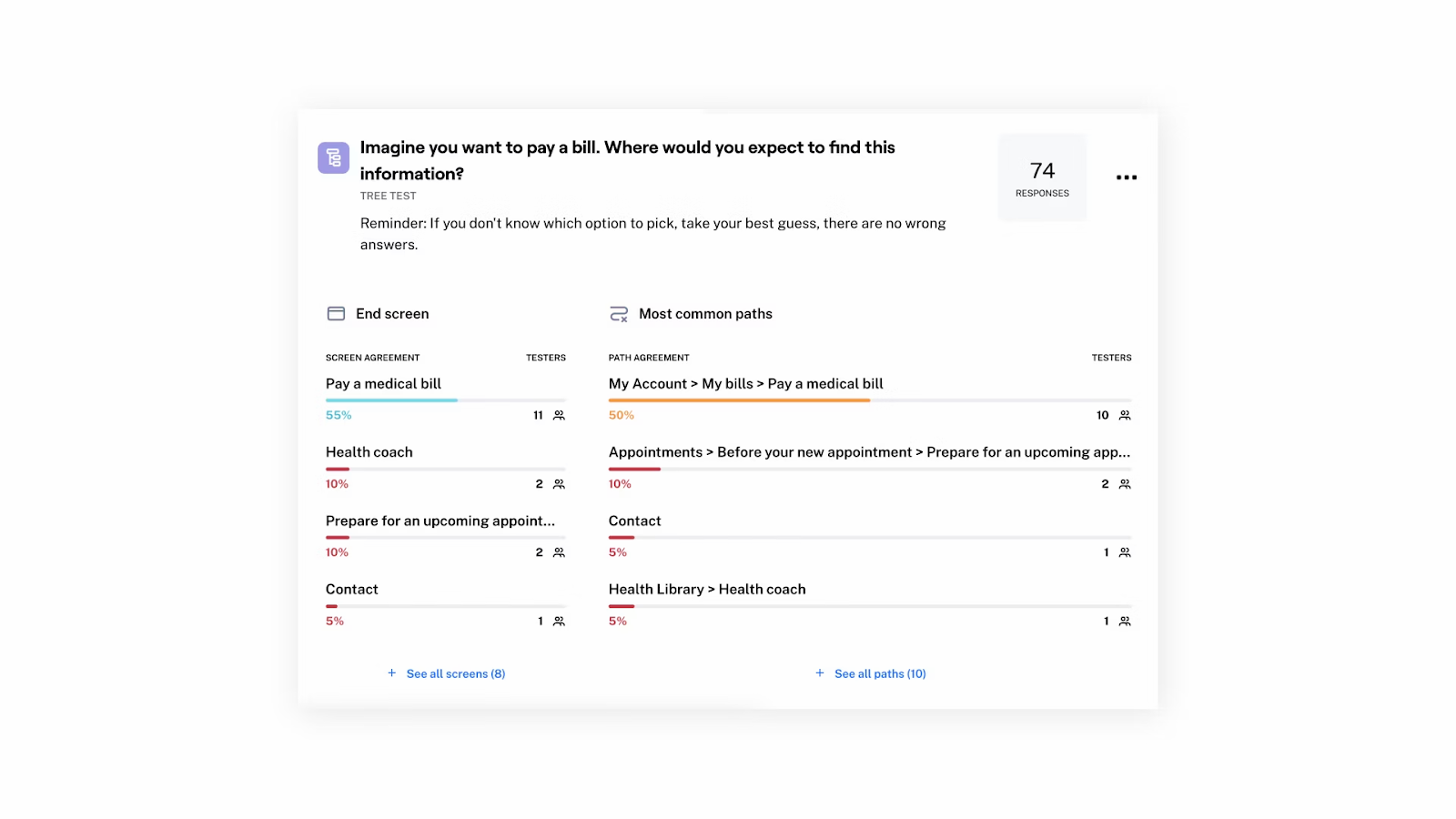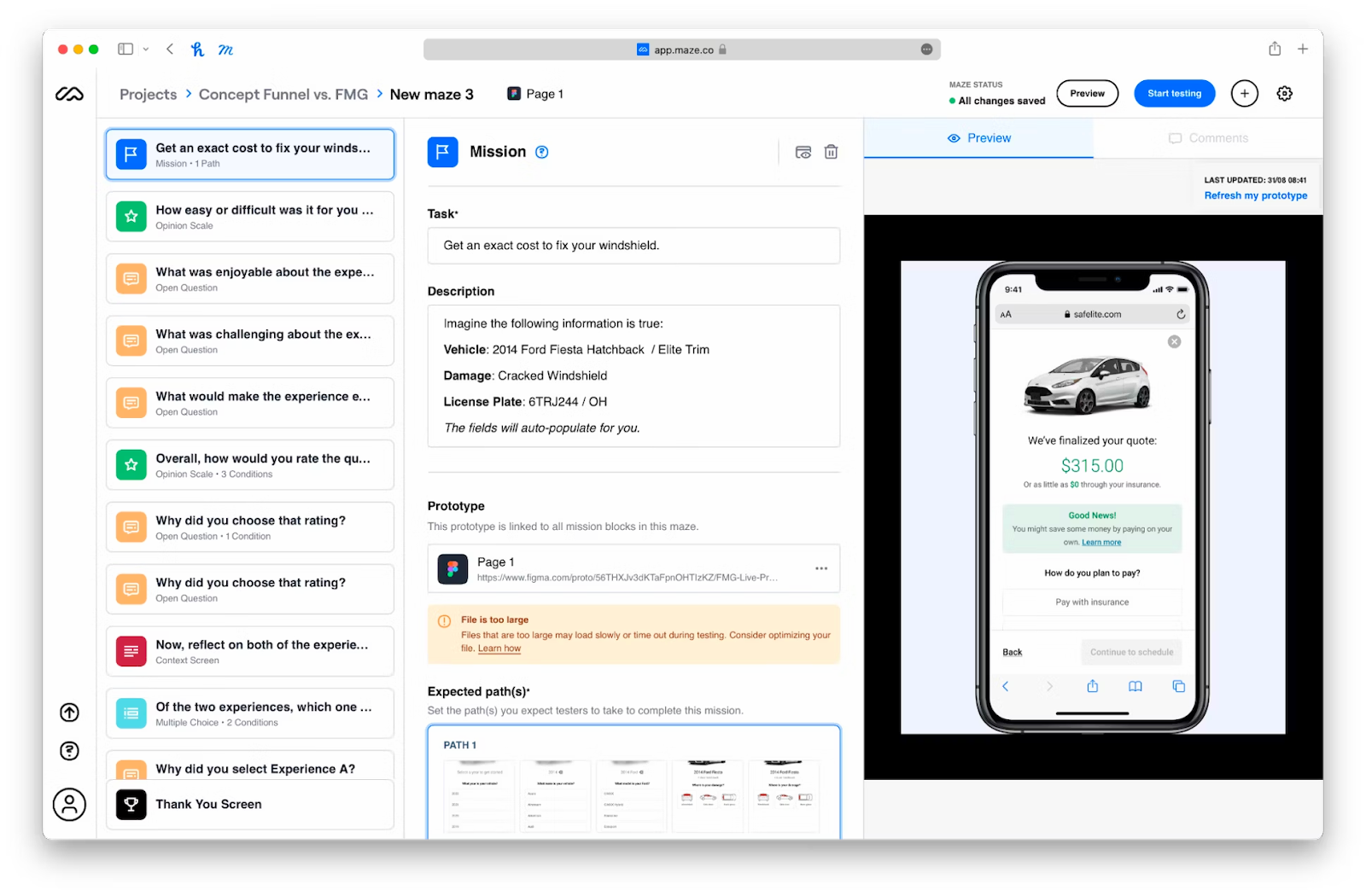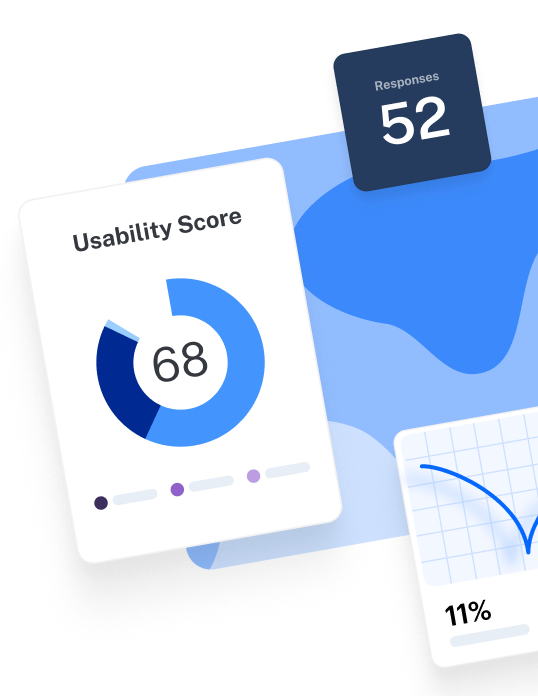Think about a brand you enjoy. Not a brand you love to follow or aspire to emulate, but one you have personal experience using. It doesn’t matter whether you’ve engaged with them online or in-person—all that matters is you’ve had positive experiences with them.
Why do you like them? Maybe it’s their swift customer service, their entertaining social media posts, or perhaps it’s just their great product experience. Most likely, it’s a combination of multiple aspects that have left a positive impression on you across numerous touchpoints of the customer journey and user experience.
We all know that good customer experience = loyal customers. But these micro-moments of positive experience also helps attract and acquire new customers and grow your business.
In this article, we’re looking at seven initiatives to improve customer experience, improve retention and acquisition. Let’s go.
What is customer experience?
Customer experience (CX) is the experience your customer has, and the impression your brand leaves on them. It’s shaped by every interaction or touchpoint—from the first website visit to your post-purchase service. It's not just what happens when they use your product, but how they feel about these interactions.
Good CX leaves customers feeling valued and satisfied, positively influencing their loyalty and future choices. Bad CX does the opposite, and can cost you greatly.
Why is customer experience important?
Customer experience isn’t just about resolving issues or improving your product—although that’s definitely important. It's how you build a loyal customer base that chooses your brand time and time again.
Not only this, it’s also crucial for attracting new customers. Positive customer experiences don’t go unnoticed, and providing a stellar experience helps acquire new customers through word-of-mouth from existing customers.
Great CX is more important than ever for business success, as demonstrated by the latest data:
- 84% of customers say customer experience is just as important as the product or service a business provides
- 94% of customers say a positive customer service experience made them more likely to purchase again
- 82% of customers recommend a company based solely on excellent customer service
- 68% of consumers are willing to pay more for product and services from a brand known to offer great CX
CX vs. UX
While similar in concept, customer experience (CX) and user experience (UX) are distinct concepts in the world of product.
Customer experience refers to the entire customer journey, from discovery to onboarding and post-purchase support.
User experience is specifically referring to how users (surprise) experience your product as they use it. This encompasses elements like usability or UI design.
UX impacts CX, so the user experience is part of the customer experience, but it also exists in its own right.
What do customers want from customer experience?
So, what do your customers look for in a positive customer experience? How can you go about delivering delight at every stage of the customer journey?
Let’s take a look.
1. Customers want you to understand their needs
First and foremost, customers want to feel seen, heard, and valued—with 73% of customers saying they expect businesses to understand their needs and expectations.
They want you to listen when they speak, to respond, and to take action based on their feedback. You can do this by investing in UX research to hear from customers, so their feedback can inform your design roadmap. Actions speak louder than words, so it’s crucial that organizations not only listen to customers, but prioritize their needs. If you don’t, your competitors will.
2. Customers want personalized experiences
When customers have a personalized experience, they feel that the brand understands their individual needs and preferences. In turn, they're more likely to return, creating a cycle of continuous engagement and purchase. 90% of customers say they would quit purchasing from a brand due to a lack of personalized customer experience.
In fact, 64% of customers expect tailored engagement based on past interactions. Businesses that proactively collect customer data—be it through previous interactions or user research—are in a better position to continually meet customer needs.
3. Customers want joined-up interactions
Customers don’t want to hear one thing at one touchpoint, and another somewhere else. Despite 78% of customers wanting consistency in their interactions with a business, 66% say they often have to repeat information to different representatives.
Engaging with different departments in your business should be seamless. Customers don’t want to explain their problems in-depth more than once, and it’s your responsibility to ensure they don’t have to by keeping track of every customer interaction—good and bad.
4. Customers want speedy solutions
Customers want solutions to their problems, and they want them fast. Whether it’s new features to improve the product experience or speedier response times when requesting support, customers except faster response times than ever, and joined-up support systems that prioritize their needs.
Alongside this, 73% of customers also want the ability to solve issues independently. Businesses that offer self-service options to cater to this need—as well as human-to-human support when needed—stand out among customer satisfaction in their service models.
5. Customers expect you to innovate and improve
Finally, customers expect you to continuously improve. They want you to keep up with the latest trends and technology to deliver the best CX possible. 67% of customers expect companies to provide new products and services more frequently than before—with 61% saying that failing to do so implies a business no longer cares about customer experience.
Brands need to stay on top of industry developments to ensure their product and services keep up with customer expectations. Failing to do so will lead to dissatisfied, unengaged customers who are more likely to switch to a competitor.
Modern-day customers know what they want from the customer experience, and they’re more than happy to tell you. It’s up to businesses to meet those needs and expectations by consistently improving customer experience. Let’s take a look at how.
How to improve your customer experience: 7 Strategies to implement in your organization
Every touchpoint, from initial engagement to support following purchase, contributes to the overall customer experience. Improving CX is no small task, but it’s well worth the increased customer loyalty and satisfaction that outstanding CX creates.
1. Build and follow a customer experience strategy
A solid customer experience (CX) strategy can help you manage and improve how customers interact with your brand. This strategy should focus on understanding and addressing customer needs and pain points throughout their journey with your company.
Here's how to build and implement an effective CX strategy:
- Define goals and metrics for success: Set specific, measurable goals for your CX strategy and define how you’ll measure success in reaching them
- Create a customer journey map: Identify all the touchpoints along the customer journey to consider how you’ll optimize every step
- Outline your research process and methods: Define how you’ll approach improving CX and what research methods you’ll use to gather customer insights
- Create supporting documentations: Make sure everybody knows about your CX strategy and how they need to support it
- Get everyone on board: Everyone in your organization needs to be able to access and understand your customer experience strategy
- Implement your strategy: Once you’ve created your strategy, the next step is to implement it by conducting research and optimizing CX
A strategy gives you a path to follow, and ensures you have a structured approach to improving CX. Without a CX strategy, you’ll find it difficult to know where to start.
2. Develop and refer to user personas
Another thing you can do to improve CX is to develop detailed user personas. These personas represent various customer segments and are vital in tailoring the journey to different needs and behaviors.
User personas enable you to plot out each stage of a user’s journey. This process includes identifying all possible touchpoints and experiences customers have with your brand, like discovering your product online, purchasing, receiving customer support, and engaging with post-purchase follow-up.
Pro tip 💡
Use Maze’s User Persona Template in Figma to quickly visualize customer segments, design personalized experiences, and create targeted journey mapping.
3. Provide a consistent, omnichannel experience
An omnichannel approach means offering a seamless experience across various touchpoints—like social media, websites, and customer support—to ensure a unified customer journey. For example, a customer might research a product on your social channels, find out about pricing on your website, ask questions via a chatbot, and purchase with a sales agent.
They expect consistent information across these channels, here are a couple tips on how to give it to them:
- Ensure your brand's voice and branding are uniform across all platforms to create a recognizable and reliable brand image and messaging for customers
- Use a CRM system to consolidate customer data from various channels for more personalized and informed interaction with each customer
- Train your staff on using various technologies to nurture customer relationships across multiple channels
Providing a consistent customer experience across all channels helps ensure you’re meeting their needs, no matter where or how they interact with you.
4. Proactively collect customer feedback
Collecting customer feedback is crucial for improving customer experience. Customer feedback gives your customers the opportunity to share their thoughts and feelings about anything and everything to do with your business. It might be your product, your customer service, your pricing, or any other aspect of their experience with you.
Collecting customer feedback enables you to better understand customer’s wants and needs. This gives you the information you need to improve customer experience. There are a wide range of UX research methods you can use to get customer experience insights, including:
- UX surveys: Help get quick quantitative and (limited) qualitative data
- User interviews: Help get ideal for in-depth qualitative feedback
- Usability testing: Help get an understanding of how users interact with your products
- Card sorting: Helps improve information architecture by studying how users categorize information
- Prototype testing: Helps understand whether the product and feature you’re building are on the right track to meet customer needs
You can collect customer feedback at almost every stage of the customer journey. From sign-up surveys to post-cancellation interviews, the insights you collect from a group of customers help you improve the experience for all customers.
Pro tip 💡
Need a helping hand to write your research questions? Use the Maze Question Bank—the internet’s best open-source question repository—and it’s entirely free!
5. Analyze indirect feedback
Analyzing indirect feedback is about understanding the unspoken or less obvious opinions and feedback of your customers. This includes things like product analytics, social media comments, online reviews, customer service calls, and Voice of the Customer (VoC) tools.
This feedback is especially beneficial as it’s more likely to be unbiased, where customer feedback you directly solicit, can sometimes be influenced by cognitive bias. Customers can be influenced by different types of cognitive biases—such a social desirability bias or subject bias—which lead to skewed data.
Indirect feedback gives you the chance to hear customer’s unbiased opinions—which can help uncover deeper insights and leads to follow. For example, if you notice online reviews talk about how complicated Feature X is, you can conduct further product research to rectify the issue. Indirect feedback can help you identify and resolve issues your customers have in order to provide better customer experience.
6. Track key CX metrics
Tracking key customer experience metrics is a strategic approach to understanding and enhancing the customer experience. These metrics serve as valuable indicators, providing insights into customer interactions with your brand.
Apart from NPS and CSAT scores, here are some more key CX metrics you should focus on:
- Customer Effort Score (CES): Asses the effort customers need to exert to resolve an issue, get a question answered, or complete an action. A lower score typically indicates easier and more efficient customer interactions.
- Customer Lifetime Value (CLV): Calculate the total revenue you can expect from a customer throughout their relationship with your brand.
- Customer Churn Rate: Track the percentage of customers who stop buying from or subscribing to your company over a period.
- Customer Retention Rate: Measure the percentage of customers who continue to engage with your brand over time. It's the flip side of the churn rate and is key to understanding long-term customer engagement.
💡 Looking to run user feedback surveys to monitor customer experience? Maze’s feedback survey templates help you get started straight away.
7. Build a customer-centric culture
A customer-centric culture requires a shift in mindset, where understanding and meeting customer needs becomes a core value that guides product decision-making at all levels.
Here’s how you can make it happen:
- Foster a culture where feedback is actively sought, listened to, and acted upon—this should involve regular interaction with customers and considering their input in decision-making processes
- Encourage collaboration across different departments to ensure a unified approach to customer satisfaction
- Provide employees with the necessary training and resources to understand and meet customer needs effectively
- Ensure that leadership models customer-centric behaviors and values, reinforcing their importance throughout the organization
This last point is crucial, getting leadership on board with building a user-centric culture is essential for its success. It’s UX leaders who need to promote user-centricity throughout the organization, and who need to prioritize it in decision-making.
How to improve the customer experience: 3 examples
So, that’s the theory behind improving customer experience—now let’s look at the practice. Here are three brands who’ve made user-driven improvements to their product to improve customer experience.
Uxcel
Uxcel, which was originally a platform for UX learning, expanded to include skill testing and job matching. This expansion led to better meeting a diverse set of user needs, with offerings for individuals who want to learn, evaluate their UX skills, or find employment opportunities in the field.
They noticed an increase in users abandoning their session after account creation—which further research uncovered was due to a lack of guidance following sign-up. So Uxcel used Maze to conduct research and improve its onboarding process, ensuring new users could easily navigate to the services most relevant to their specific goals and interests.
The results were positive, and feedback from users was enthusiastic. Improving navigability and adding guidance following sign-up improved customer experience by guiding users towards the features that they were after. This resulted in:
- 2x Activation rates in new users
- Reduction in user drop-offs during the onboarding process
- Improved user engagement and positive feedback on the new onboarding experience
West Monroe
West Monroe is a digital services firm that helps companies become digitally-focused product organizations. They help other businesses improve their digital experiences and, by extension, their customer service offerings.
West Monroe was working with a large health insurer and care organization to define, create, and launch a unifying digital experience for their customers. The aim was to take the existing, disconnected online experience, and turn it into a seamless experience for customers.
When developing such a large site, website navigation can be tricky—and a huge hindrance on customer experience. People want to be able to find what they’re looking for quickly and easily, and failing to do so can cause frustration, dissatisfaction, and user drop-off.
One of West Monroe’s main aims was to ensure site navigation was as intuitive as possible, so they decided to conduct usability testing and tree testing in Maze.
After reviewing tree testing data, the team had an accurate understanding of where participants went to complete a specific task—enabling them to build their information architecture in line with what users expected and significantly improve navigation.

Safelite
Safelite is a provider of vehicle glass repair and replacement services in the United States. They help people replace their broken glass quickly and easily, but found that their digital experience needed improving. Their ideal solution? A new app to improve customer experience.
They ran customer experience surveys to understand the issues users were facing, and found that users wanted improved speed, clarity, and convenience when searching for parts and making appointments.
They continued to gather feedback from users on these issues, and developed prototypes for the new app and features. The goal was to address the issues they’d uncovered and improve customer experience for users.
Conducting prototype testing with Maze, as well as assessing their existing digital experience, and compared the two to see how customer satisfaction and experience changed. They found that customer satisfaction—measured by the amount of users marking the experience as ‘easy’ or ‘extremely easy’ on a rating scale—increased from 76% to 92% with the new design. That’s a 16% improvement!

Improving customer experience with Maze
Providing excellent customer experience should be top of your list—no matter what industry you operate in. It’s a crucial differentiator in a world where customers can easily go elsewhere if you don’t provide the experience they’re after.
Improving CX is a complex process that requires you to look at all the touchpoints in your customer’s journey. CX initiatives could be anything from upskilling your customer success agents to investing in new tech for improved customer experience management—it depends on your current initiatives and how they can be developed.
One thing’s for sure—your CX initiatives should be informed by your customers. Conducting user research is essential for identifying customer issues and building optimal solutions.
With Maze, you can quickly and easily collect customer feedback and uncover decision-driving insights. Whether you want to run user interviews, conduct feedback surveys, or better understand usability—Maze’s suite of user research methods are ideal for uncovering user insights.
If you don’t provide a flawless customer experience, your competitors will. Great products are no longer good enough—it’s about providing a user experience that customers can’t get anywhere else.
Frequently asked questions about customer experience
How do you optimize customer experience?
How do you optimize customer experience?
There are many ways you can optimize customer experience:
- Manage and monitor customer experience across all touchpoints
- Develop and refer to user personas when making decisions
- Provide an omnichannel experience
- Proactively collect direct and indirect customer feedback
- Trach customer experience metrics to identify areas of opportunity
- Build a customer-centric culture in your organization
What’s the best way to improve customer experience?
What’s the best way to improve customer experience?
The best way to improve customer experience is to actively listen to your customers and use their feedback to guide your actions. This means regularly collecting feedback through surveys, social media, and direct interactions, then analyzing this data to understand customer needs and pain points.
What are good customer experience examples?
What are good customer experience examples?
Great examples of customer experience initiatives that have made an impact include doubling the new user activation by refining the onboarding process, and boosted user satisfaction from embedding continuous user feedback.


